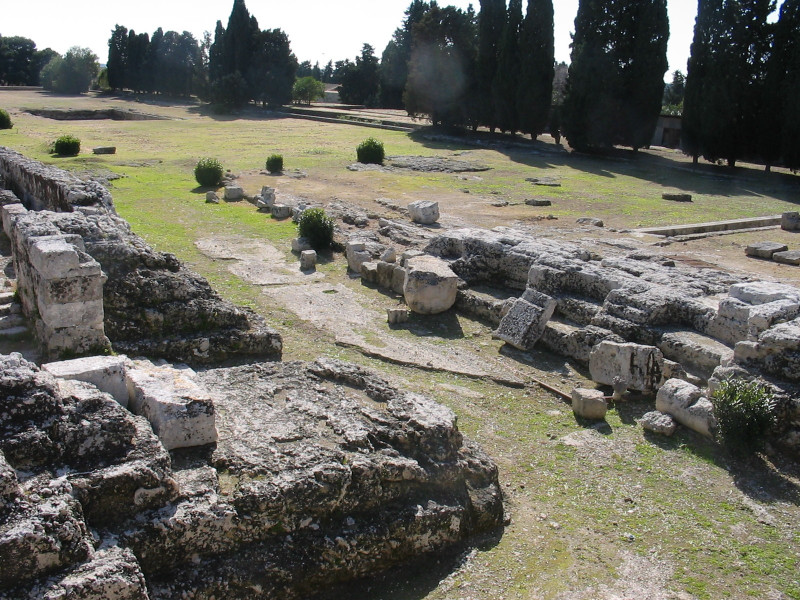Parco Archeologico della Neapolis
This large archaeological site constitutes the core of the Archaeological Park of Syracuse. Includes, in addition to some testimonies from Prehistoric times (Bronze Age, facies of Castelluccio, Thapsos and Cassibile), the area of the ancient city with few public monuments, the most famous of antiquity such as the theater, the area above the nymphaeum, the Street of Tombs, the area of the Sanctuary of Apollo, the altar of Hieron, the Roman amphitheater, a large area of stone quarries, a vast necropolis (called "Grotticelli") and the Norman-sveva church of St. Nicholas. The theater is definitely among the most famous of the ancient world: travelers of the '700 and' 800 have left different descriptions and views of it. The monument has been the subject of numerous studies that have examined not only in itself, but have deepened the origin and evolution of the greek theater where architectural creation. Numerous sources tell us of a greek theater of Syracuse made by Damocopo, said "Mirylla". With this monument are linked several moments in the life of the city, both from a political point of view that cultural. Among archaeologists has debated the issue of whether this oldest theater corresponds to the place and form of the building we see today. The theater is partly preserved and excavated in the rock, while the built of the auditorium as well as the monumental remains of the stage of the Roman period are lost, possibly due to the reuse of the blocks by the Spanish that they would serve to achieve the fortifications of Ortigia between 1520 and 1531. The archaeological investigations already begun in the late '700, and early 800 continued on several occasions; studies and research continue to this day. The theater carved into the rock of the hill Temenite: auditorium is very large, with 67 rows, divided into nine wedges eight ladders and horizontally, about halfway, a corridor (diazoma). The wall upstream of this diazoma, characterized by the presence of moldings, is engraved with inscriptions in greek. From the first wedge to the west are the names: Gelone II (maybe), son of Ierone II and Nereid, his wife and Philistide. At the V wedge there are some letters that allow it to return "Olympian Zeus"; it also seems that follow the name of Heracles. The names of other gods are no longer legible.



